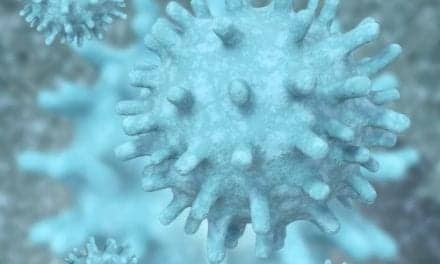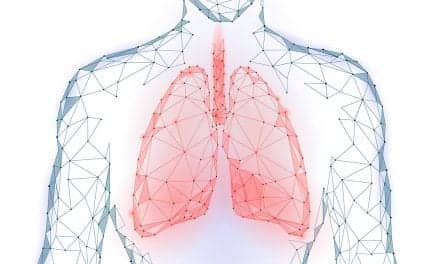The improvement in surviving HIV infection is due to the availability and judicious use of specific antiretroviral agents.
The management options for individuals with HIV infection/AIDS and associated diseases such as cytomegalovirus (CMV) infection have improved dramatically over the course of the past several years as a result of a more complete understanding of the pathogenesis of HIV infection, along with the ongoing development of antiretroviral agents. Patients currently living with HIV infection can expect to live longer, more healthful, and more satisfying lives than those in whom AIDS was diagnosed 18 years ago, when the epidemic was first described.
Anti-HIV drugs can be categorized based on their mechanisms of action. Nucleoside analogues (reverse-transcriptase inhibitors) work by mimicking one of the naturally occurring building blocks of human DNA, thereby interfering with reverse transcription (a process that is essential to HIV reproduction). Another class of drugs, known as nonnucleoside reverse-transcriptase inhibitors, achieves the same effect through a different process. A third class of drugs, protease inhibitors, prevents viral replication by inhibiting the breakdown of protein precursors essential for HIV’s infection of new cells.
Nucleoside Analogues
Nucleoside analogues work by inhibiting the viral enzyme reverse transcriptase. This blocks DNA synthesis and suppresses HIV replication. Nucleoside analogues are effective in reducing viral load—the amount of HIV RNA detectable in plasma, as measured using polymerase chain reaction (PCR) or branched-chain DNA methods—in patients with HIV disease. Examples of nucleoside analogues are zidovudine (AZT or ZDV), didanosine (ddI), zalcitabine (ddC), stavudine (d4T), lamivudine (3TC), and a zidovudine-lamivudine combination.
NonNucleoside reverse-transcriptase Inhibitors
Nonnucleoside reverse-transcriptase inhibitors use a different, direct approach to inhibit the enzyme reverse transcriptase. Examples of nonnucleoside reverse-transcriptase inhibitors are nevirapine and delaviridine.
The most thoroughly studied (although not necessarily the most potent) use of nevirapine is in combination with zidovudine and didanosine. This triple-combination regimen has resulted in potent and sustained antiviral activity.1 The best use of nevirapine may be in patients with early-stage disease who have not previously used other therapies. This strategy saves more potent regimens for later use, if necessary. The optimal use of delaviridine has yet to be established.
Protease Inhibitors
Protease inhibitors inhibit the action of the viral enzyme HIV-1 protease. This enzyme is necessary for the breakdown of viral protein precursors (an event that must occur in order for HIV to become infectious). Protease inhibitors include saquinavir (SAQ), ritonavir, indinavir (IND), and nelfinavir.
Results of dose-escalation studies and phase 2 clinical trials suggest that protease inhibitors should be used at the highest tolerable dose, and in combination with reverse-transcriptase inhibitors, to prevent the emergence of drug resistance. In previously untreated patients, a combination of two reverse-transcriptase inhibitors and a protease inhibitor is recommended. Ritonavir and indinavir appear to be equally effective when administered in combination with reverse-transcriptase inhibitors. Nelfinavir appears to be similarly potent in such combinations. Because of the low bioavailability of the current formulation of saquinavir (a hard-gel capsule), only a small amount of the drug reaches the bloodstream. A new, soft-gel capsule is currently being evaluated in clinical trials.
According to Cheryl K. McDonald, MD, at the Division of Infectious Diseases, University of Colorado Health Sciences Center, Denver, “A theoretical advantage of saquinavir is that saquinavir-resistant organisms remain susceptible to indinavir and ritonavir, whereas organisms resistant to indinavir and ritonavir are likely to be cross-resistant to saquinavir. Hence, some clinicians prefer a strategy that preserves these more potent inhibitors for use at later stages of HIV infection.”
Using protease inhibitors in patients already receiving antiviral therapy is more complex. “As in the case of drug-naive patients, protease inhibitors should be administered in combination with nucleoside reverse-transcriptase inhibitors,” McDonald says. “Patients who have received long-term therapy with reverse-transcriptase inhibitors, however, are likely to harbor HIV isolates that are resistant to these drugs. Whenever possible, it is advisable to substitute new nucleoside analogues that are not cross-resistant with drugs to which the patient has been exposed (at the same time that protease inhibitors are added). The rationale for this approach is that it minimizes the chance of the emergence of drug resistance, because the addition of a protease inhibitor to a failing regimen is equivalent to protease inhibitor monotherapy.” Drugs used in the treatment of HIV disease are summarized in Table 1.
| Drug | Recommended Dosage | Most Common Adverse Effects |
| Nucleoside analogues | ||
| Zidovudine | 200 mg tid or 300 mg bid | anemia, leukopenia, nausea, weakness, headache |
| Didanosine | 200 mg bid (125 mg bid for patients weighing <60 kg) | nausea, abdominal pain, pancreatitis, neuropathy |
| Zalcitabine | 0.75 mg tid | neuropathy, oral ulcers, pancreatitis |
| Stavudine | 40 mg bid (30 mg bid for patients weighing <60 kg) | neuropathy |
| Lamivudine | 150 mg bid | nausea (not very common) |
| Nonnucleoside reverse-transcriptase inhibitors | ||
| Nevirapine | 200 mg qd for 14 days, then 200 mg bid | rash, nausea |
| Delaviridine | 400 mg tid | rash, headache, nausea |
| Protease inhibitors | ||
| Saquinavir | 600 mg tid | nausea |
| Ritonavir | 300 mg bid starting dose,escalating to 600 mg bid by day 14 | nausea, vomiting, circumoral paresthesia |
| Indinavir | 800 mg tid on an empty stomach | nausea, kidney stones |
| Nelfinavir | 750 mg tid | diarrhea |
| Table 1. Drugs used in the treatment of HIV disease ; qd=daily, bid=twice daily, and tid=thrice daily. | ||
Highly Active Antiretroviral Therapy
The choice of treatment remains a matter of controversy. Recent guidelines issued by the US Food and Drug Administration recommend what is commonly known as a cocktail approach: a combination of two reverse-transcriptase inhibitors and one protease inhibitor. This recommendation is based on information2 showing that treatment is most effective and long lasting when it reduces viral load below detectable levels. Early treatment strategies using any single drug or any combination of two reverse-transcriptase inhibitors alone are now considered inadequate.
| Bacterial Infections Streptococcus pneumoniae Haemophilus influenzae Staphylococcus aureus Moraxella catarrhalis Pseudomonas aeruginosa Rhodococcus equi Nocardia asteroides Mycobacterium tuberculosis Mycobacterium avium-intracellulare Other nontuberculous mycobacteria Protozoal Infections Viral Infections |
Fungal Infections Aspergillus fumigatus Cryptococcus neoformans Blastomyces dermatitidis Coccidioides immitis Histoplasma capsulatum Malignancies Other Pulmonary Disorders |
| Table 2. Partial list of HIV-associated pulmonary disorders. | |
The introduction of highly active antiretroviral therapy (HAART), which typically includes at least two reverse-transcriptase inhibitors plus a protease inhibitor, promises to change the epidemiology, presentation, and manifestations of HIV disease. HAART is associated with a profound reduction in HIV RNA and an increase in CD4+ lymphocyte counts3 (a marker of HIV progression). Emerging information suggests that HAART is having an impact on the infectious complications of HIV disease, although the magnitude of this impact has not yet been fully elucidated.
Unfortunately, the limitations of currently available antiretroviral agents are becoming increasingly well known, as HIV has been shown to develop resistance to them rapidly. It is, therefore, of critical importance to be adept at diagnosing, treating, and managing the opportunistic infections associated with HIV disease. Clearly, the other major contribution to the survival and well-being of persons with advanced HIV infection is the use of agents effective in the prevention and treatment of opportunistic infections associated with HIV disease. In fact, ineffective treatment of opportunistic infections may be a major contributor to early mortality.
Opportunistic Infections
Many of the opportunistic infections associated with HIV infection, such as tuberculosis, salmonellosis, isosporiasis, and esophageal candidiasis, can be effectively treated and eradicated. Some (such as Pneumocystis carinii pneumonia), while probably eradicable, have such a high rate of recurrence or relapse that chronic prophylactic therapy is required.
It is uncertain whether other specific opportunistic infections, such as cryptococcal meningitis, disseminated Mycobacterium avium complex, toxoplasmosis, and histoplasmosis, can be effectively eradicated using currently available treatment regimens. There are no routinely effective, specific treatments for the other opportunistic infections (such as cryptosporidiosis, microsporidiosis, and progressive multifocal leukoencephalopathy).
Opportunistic infections caused by CMV are of particular concern to patients with HIV infection. CMV can cause a wide range of serious infections, including retinitis, pneumonitis, gastritis, colitis, and neuritis. Diseases due to CMV can be effectively managed with specific anti-CMV agents, but these agents limit only the replication of the virus (and the progression of the disease) while the agents are present in the tissue. The anti-CMV agents are not virucidal and require lifelong administration to prevent progressive CMV disease. Anti-CMV agents include foscarnet sodium, ganciclovir (DHPG or GCV), and cidofovir.
CMV viremia and viruria can routinely be detected among patients with CD4+ lymphocyte counts of less than 100 cells/mL. These examinations are expensive and have not been clinically useful in the diagnosis of CMV disease; as a result, they have not been routinely performed on large numbers of patients to accurately assess the impact of CMV infection on the early mortality of persons with advanced HIV infection. Retinitis and other manifestations of disease due to CMV occur very late in the course of HIV infection, usually when the CD4+ lymphocyte count is less than 50 cells/mL. The survival of patients with simultaneous HIV and CMV infections, however, does not appear to be shorter than that of individuals with HIV infection alone.
Early in the AIDS epidemic (prior to the availability of foscarnet, ganciclovir, and cidofovir), survival after the diagnosis of CMV retinitis was typically measured in months. With the availability of anti-CMV agents and the knowledge that CMV retinitis could be effectively treated (and visual loss prevented) if the diagnosis was made early enough, survival time after diagnosis increased twofold. Some of this increase in survival may be due to the earlier detection of CMV disease.
Because CMV infection of the retina produces a necrotic lesion and leads to irreparable retinal damage, it is critically important to recognize and treat CMV retinitis early to prevent loss of vision. The treatment of CMV-associated colitis and esophagitis is less urgent; the linings of the esophagus and colon regenerate, and some clinicians and patients opt to treat esophagitis and colitis for symptomatic control, then stop therapy until symptoms recur.
According to Michael A. Polis, MD, senior investigator at the National Institute of Allergy and Infectious Diseases, Bethesda, Md, “How differences in the treatment of the different manifestations of CMV disease in persons with HIV infection will affect survival is unknown, but requires careful consideration. When decisions regarding the use of different therapies for CMV disease are made, it is important to evaluate the potential impact on survival, as well as on end-organ disease. This will be even more important in the near future with the additional information that will be reported about current anti-CMV agents, newer agents, and combinations of agents for the prophylaxis and treatment of CMV disease.”
Pulmonary Manifestations of CMV Disease
HIV-associated pulmonary disorders range from mild abnormalities in pulmonary function unaccompanied by respiratory symptoms to fulminating opportunistic infections that were rare before the onset of the AIDS epidemic (Table 2). During the early period of the AIDS epidemic, P. carinii pneumonia was the most frequent pulmonary complication. By 1993, its incidence among patients with HIV disease had fallen dramatically as a result of a widespread prophylaxis initiative. Today, acute bronchitis and sinusitis, which can be caused by a variety of organisms, are among the most prevalent pulmonary complications of HIV disease. In addition, the increasing incidence of bacterial pneumonia and tuberculosis suggests an increase in the population of HIV-infected intravenous-drug users.
CMV continues to be a significant source of pulmonary disease among HIV-infected patients. As patients’ lives are extended through aggressive prophylaxis against multiple opportunistic infections—and with the increased use of systemic corticosteroids (which can further compromise immune function)—both the incidence and the seriousness of CMV infection may be on the rise.
The controversy over the role of CMV as a serious, life-threatening pulmonary pathogen in AIDS patients is particularly striking in view of the nearly uniform acceptance of CMV found in the lungs of transplantation patients as proof of clinical pneumonitis caused by this virus. One reason for the controversy is the difficulty of establishing a diagnosis of this disease before death. With the advent of successful anti-CMV therapy, the need for early diagnosis has become even more critical.
Positive viral culture for CMV in bronchoalveolar lavage (BAL) fluid is not specific, and available culture techniques result in significant delays in reporting. The gold standard of cytologic evidence (intranuclear or intracytoplasmic inclusion bodies, typically described as owl eyes in appearance) cannot always be obtained. Newer techniques, including PCR applied to BAL fluid or the use of CMV monoclonal antibodies, may enhance diagnosis.
The clinician’s index of suspicion for CMV pneumonia can be significantly raised by noting these correlations:
• extrapulmonary CMV infection;
• Kaposi sarcoma (pulmonary or nonpulmonary);
• severe immune depletion (<50 CD4+ cells/mL);
• treatment using corticosteroids (proven in the transplantation population, but requiring further study in the HIV setting); and
• CT scan findings that suggest pneumonia.
Community-acquired viral infections also continue to be an important source of pulmonary disease in immunocompromised, HIV-infected patients (see sidebar).
The management of HIV disease and its manifestations involves a multidisciplinary care approach. With this type of approach, patients with HIV disease and its many manifestations can enjoy a higher quality of life. Patients who understand their role as the central member of the treatment team and cooperate with health care personnel will optimize their own therapeutic outcome.
John D. Zoidis, MD, is a contributing writer for RT.
References
1. Myers MW, Montaner JG. A randomized, double-blind comparative trial of the effects of zidovudine, didanosine, and nevirapine combinations in antiviral naive, AIDS-free, HIV-infected patients with CD4 counts 200-600/mm3. Program and Abstracts of the XI International Conference on AIDS. 1996; Vancouver, British Columbia. Abstract Mo B294.
2. Hammer SM, Katzenstein DA, Hughes MD, et al. A trial comparing nucleoside monotherapy with combination therapy in HIV-infected adults with CD4 counts from 200 to 500 per cubic millimeter. N Engl J Med. 1996;335:1081-1090.
3. Mars ME, Loi S, Suzan V, Gallais H. Protease inhibitors lead to a change of infectious diseases unit activity. Program and Abstracts of the 4th Conference on Retroviruses and Opportunistic Infections. January 22-26, 1997; Washington, DC. Abstract 203.









